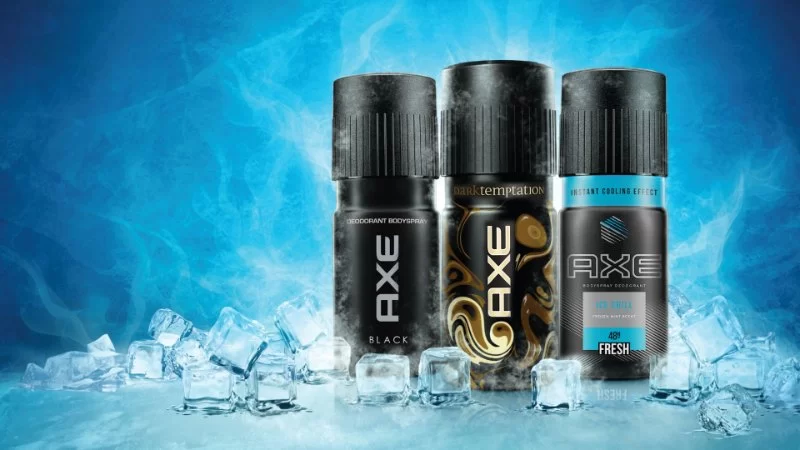- 1 - the-rise-of-axe-branding-through-boldness
- 2 - why-unilevers-body-spray-campaign-was-pulled
- 3 - public-backlash-and-cultural-shifts-in-response
- 4 - the-impact-on-the-brand-and-market-positioning
- 5 - case-study-axe-vs-gen-z-values-and-rebranding-efforts
- 6 - what-marketers-can-learn-from-the-axe-ad-failure
1. The Rise of Axe: Branding Through Boldness
Launched in the early 2000s, Axe (known as Lynx in some regions) quickly became one of Unilever's most recognizable youth-targeted brands. It dominated the body spray market with a provocative strategy: using humor, sexual innuendo, and the fantasy of irresistible masculinity to appeal to teenage boys. Ads famously portrayed average guys using Axe to magically attract droves of women. This approach was edgy, confident, and perfectly attuned to early 2000s pop culture.
However, as the social landscape evolved, the brand's messaging—once seen as daring—began to feel outdated, tone-deaf, and even offensive to a more progressive, inclusive generation.
2. Why Unilever’s Body Spray Campaign Was Pulled
2.1 Shifting Consumer Expectations
The Axe brand’s core narrative began to crack under the pressure of changing values. Millennials and Gen Z consumers demand authenticity, respect, and inclusivity in advertising. Campaigns that objectify women or over-exaggerate masculine stereotypes no longer align with the majority's beliefs. Unilever's ad creatives hadn’t caught up quickly enough.
2.2 Specific Campaign Controversy
In 2017, one Axe campaign titled “Is It OK For Guys…” aimed to reposition the brand with a new message around masculinity and vulnerability. Although the intention was to evolve, critics pointed out inconsistencies. The pivot felt insincere to many, given the brand’s long history of pushing hyper-masculine ideals. Some saw it as performative rather than genuine change, leading to skepticism and disappointment.
2.3 Social Media Amplification
Platforms like Twitter and TikTok became echo chambers for disapproval. Users shared old ads, mocking the disconnect between past and present messaging. Influencers and advocacy groups questioned why the brand hadn't apologized or owned its previous narratives more transparently.
3. Public Backlash and Cultural Shifts in Response
3.1 From Humor to Harm
What was once humorous now felt harmful. Axe’s previous depiction of women as prizes and men as entitled suitors didn’t just age poorly—it contradicted the emotional intelligence Gen Z celebrates. Many consumers felt alienated, not amused.
3.2 #MeToo Movement and Marketing Accountability
The rise of the #MeToo movement marked a turning point. Brands like Axe were re-examined for their role in shaping toxic gender expectations. The failure to sincerely engage in this cultural reset only heightened criticism against the brand.
4. The Impact on the Brand and Market Positioning
4.1 Decline in Youth Relevance
Once a staple in teenage lockers, Axe lost relevance among its core demographic. Younger audiences moved on to gender-neutral or niche fragrance brands that better reflected their identities and values. Unilever saw stagnant growth in the segment despite heavy ad spend.
4.2 Retailer Response and Shelf Presence
Some retailers began to prioritize more socially conscious brands. While Axe still had a presence, it was no longer the default go-to for teen boys. Competing products with more modern packaging and messaging began to dominate end-cap displays.
5. Case Study: Axe vs. Gen Z Values and Rebranding Efforts
5.1 A Case of Misaligned Storytelling
In one telling incident, Axe released a commercial where a man sheds his muscle suit to reveal a softer, more intellectual side—a stark contrast to previous portrayals. While the ad visually represented change, the underlying tone still felt forced. Many users commented that the brand hadn’t earned the right to deliver this message without first acknowledging its history.
5.2 Attempted Rebrands and Missed Marks
Unilever attempted multiple refreshes, from changing taglines to updating product lines with more subtle scents. While these moves hinted at evolution, they lacked emotional resonance. Consumers today want narrative continuity and brand accountability—not just cosmetic updates.
5.3 A Learning Curve in Brand Trust
Some of the rebranding attempts came off as pandering rather than progressive. A stronger approach might have included partnerships with men's mental health groups or educational campaigns about healthy masculinity. Without this, the marketing seemed superficial.
6. What Marketers Can Learn from the Axe Ad Failure
6.1 Culture Moves Faster Than Campaigns
Marketing teams must adapt in real-time. Cultural tides shift swiftly, and brands must anticipate the future rather than play catch-up with the past. Axe's failure wasn’t just in messaging—it was in delayed action.
6.2 Authenticity Can’t Be Faked
Reinvention is possible—but only when it’s transparent and meaningful. Axe’s campaigns didn’t resonate because audiences felt the shift wasn’t built on real change. Trust, once broken, is difficult to rebuild without humility.
6.3 Engage in Dialogue, Not Just Monologue
Brands should listen more. By engaging with their audiences authentically—via social media, surveys, or partnerships—they can co-create narratives that reflect shared values. Had Axe listened more, their campaign could have been saved—or at least salvaged.
If you’re seeking fragrance brands that resonate with your values and sensibilities, consider visiting Scent Snob for curated, modern, and inclusive scent collections.


0 comments